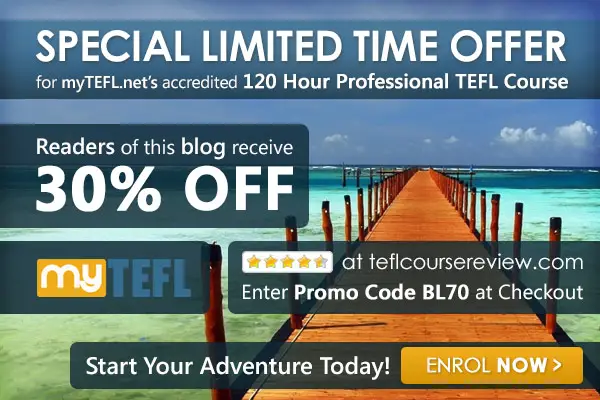Contents
Toggle
Meet David De’ Ath, founder, editor, and writer at Wonderful World English. With his extensive background as an English teacher, David provides valuable insights and practical tips on ESL for students and teachers alike.
Teaching English in China has become a dynamic profession with a broad range of opportunities for both experienced educators and those new to the field.
The demand for English teachers is high across different educational settings, including international schools, public schools, private schools, and training centers.
Securing a position often involves demonstrating one’s teaching abilities through a demo class, which is a critical component of the interview process.
This demo class serves as a practical showcase for teachers to exhibit their teaching style, engage with simulated students, and present their command over classroom management and lesson delivery.
The requirements for teaching English in China vary by institution, but typically include a bachelor’s degree and a TEFL (Teaching English as a Foreign Language) certification.
International schools often seek teachers with more advanced credentials and prior teaching experience, while training centers might be more flexible with qualifications.
Regardless of the teaching environment, presenting a successful demo lesson is a common expectation for applicants.
It is an opportunity to display how well they can adapt to the cultural and educational context of China, and how effectively they can impart the English language to learners with varying levels of proficiency.
A well-prepared demo lesson reflects a teacher’s ability to plan, implement, and reflect on instructional strategies tailored to the specific needs of Chinese students.
As English is a second language for the students, teachers must employ clear, engaging, and culturally sensitive methodologies that facilitate language acquisition.
The demo class, therefore, becomes an indispensable component of the recruitment process, allowing schools to identify candidates who can deliver high-quality English education and contribute to the students’ language learning journey.
Preparation for the Demo Class
Successful preparation for a demo class involves understanding the particular context of Chinese classrooms, devising an effective lesson plan, and accounting for cultural differences to engage students actively.
Understanding the Chinese Classroom
One must recognize that a Chinese classroom may differ substantially from what they’re accustomed to.
Knowing the age group and background of the learners is crucial, as these factors influence the selection of teaching materials and activities.
In China, classroom sizes can be larger, and the emphasis is often on respect and collective learning.
Teachers should anticipate different energy levels and engagement strategies based on the students’ age, ranging from songs and games for young learners to more complex discussion topics for older students.
Planning Your Demo Lesson
A well-structured lesson plan is the backbone of any successful demo class.
Teachers should ensure their plan includes a clear outline of objectives, activities, and resources needed.
It’s beneficial to include a variety of activities to showcase adaptability and the ability to cater to different learning styles.
For younger learners, incorporating songs, games, and gestures can aid retention and maintain high energy levels.
With English as a second language, practice and repetition are important, so including drills or interactive exercises helps demonstrate teaching capabilities.
Additionally, allowing some flexibility within the lesson plan is important to adapt to real-time classroom dynamics.
Demo Lesson Plan
| Time | Activity | Notes |
|---|---|---|
| 5 min | Warm-up (game or song) | E.g., “Head, Shoulders, Knees, and Toes” |
| 10 min | Introduction of new vocabulary | Use images and gestures |
| 15 min | Interactive practice | Pair work or group activity |
| 10 min | Practical application | Role-play scenarios |
| 5 min | Review and Q&A | Recap main points, clarify doubts |
Cultural Considerations
It’s essential to navigate cultural sensitivities with care during a demo class in China.
Demonstrating respect for local customs and incorporating culturally relevant materials can resonate well with both learners and evaluators.
One should also understand the importance of hierarchical relationships in Chinese culture, which may reflect in students’ interactions with the teacher.
Alongside teaching the curriculum, imparting cultural insights can enrich the class experience and showcase a teacher’s depth of cultural understanding.
Related: How to Teach English in China: Your Ultimate Guide

Securing a Teaching Position
Embarking on a career as an English teacher in China requires a solid understanding of the job market, possession of essential qualifications, and a grasp of the potential financial and lifestyle benefits.
Navigating the Job Market in China
The demands for ESL teachers in China are significant due to its vast educational system.
Candidates are encouraged to thoroughly research institutions ranging from local schools to top-tier training centers.
Networking with other teachers and utilizing ESL job forums may provide valuable insights into available positions.
An effective resume highlighting relevant experience, credentials, and an aptitude for teaching young learners is crucial.
During the interview process, HR representatives seek candidates with clear enunciation and a robust vocabulary, essential skills for instructing English learners.
Qualifications and Requirements
To secure a teaching job in China, most schools prefer native English speakers from countries like the USA, Canada, Australia, the UK, Ireland, New Zealand, and South Africa.
Additionally, a bachelor’s degree is a standard academic requirement.
A TEFL certificate—preferably accredited—or equivalent qualifications, are often necessary.
Prior professional development and experience in tutoring can be advantageous.
Moreover, obtaining a Z visa—the official visa for foreign teachers—is mandatory, for which one needs to meet China’s visa regulations.
Salary, Benefits, and Living in China
Teachers can expect a competitive monthly salary often paired with a range of benefits. These may include:
- Free housing or housing allowances
- Flight reimbursements
- Bonuses for contract completion
- Health insurance
- Assisted visa application process
Salaries are paid in Renminbi (RMB). Depending on lifestyle, they can allow for a comfortable living and potential savings.
The cost of living varies significantly between cities; however, many schools offer accommodation, lowering the overall living expenses.
Working hours typically range from 20 to 30 hours per week, allowing time for exploring the local culture or undertaking additional tutoring opportunities.
Smaller class sizes are often another advantage of the job, reducing stress and enabling a more effective conversation and learning environment.

Conclusion
Teaching English in China offers a dynamic range of opportunities, with a high demand for qualified teachers across various educational settings.
Successful applicants must navigate a rigorous selection process, often showcasing their teaching skills through a demo class.
This practical demonstration is crucial, allowing teachers to exhibit their instructional strategies and adaptability to the Chinese educational and cultural context.
With requirements varying by institution, teachers generally need a bachelor’s degree and TEFL certification, with international schools sometimes requiring additional qualifications.
The demo class, a key part of the hiring process, serves as a vital opportunity for teachers to demonstrate their ability to deliver engaging, culturally sensitive, and effective English lessons.
This stage is essential for educators to illustrate their readiness to contribute to China’s educational landscape, where academic excellence and comprehensive language instruction are highly valued.
We hope you find value in this information; you can contact us if you require any support.
Have a wonderful day!
Image Attribution: All images licensed via canva.com





